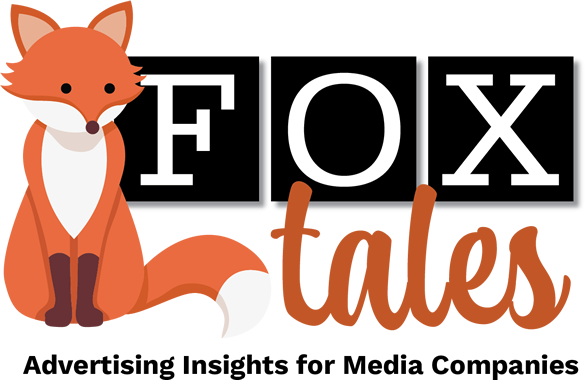In the media industry, relationships are the foundation of successful businesses. In this December issue of Fox Tales, we thought we’d share a Q&A with an old friend of Fox Associates. Bill Smith is a web designer, art director, editor, photographer, and more who’s been perfecting his trade for 25 years. He describes himself as El Jefe (The Boss) at his firm, designSimple.
Based in Pasadena, California, Bill been recognized for his work by the Society for News Design, The Society of Publication Designers, Print Magazine and others. He’s also won recognition from the Association of Alternative Newsweeklies and the Los Angeles Press Club.
And Bill’s done essential work for Fox Associates for a long time. That and many other things make Bill a great candidate for our latest edition of “5 Questions With…” And with that, here’s Bill.
Fox Tales: How are evolutions in web design assisting and improving advertising effectiveness and user engagement?
Bill Smith: In earlier eras of the web, there were spaces for established ad formats integrated with editorial in a way that resembled a print publication. It was simple and it sort of worked, but also sort of didn’t. And that’s still prevalent for the most part. Google still serves many of the same ad sizes it did 20 years ago. More recently, though, the sites I work with and the sites I frequent employ more diverse ad strategies. Banners and tiles are still a biggie, but they are placed prominently and often used to organize site content. Ad space can be an ally to editorial space.

Bill Smith.
Some of the better trends are in the evolution of popups. I know everyone thinks they’re obnoxious, but they are measurably less so than ten years ago, and often really nicely designed. And I think metrics generally bear out that they work.
Also more sophisticated than the typical tile ad is contextual placement of ad messages. This, of course, is much easier in a commercial publication talking about, for instance, food, and then dropping links with images to buy the tools and ingredients they used to prepare the dish. But even in a professional members site, those ads for tools or services or additional info seem highly effective and definitely carry authority over the repetitious cookie-placed Google stuff.
My favorite ads lately are the content ads in social media. Tik Tok, Facebook, YouTube, the ads are often modestly entertaining. That’s intersecting with the old medium of TV commercials, but that’s the power of digital—there’s no longer a divide between the traditional media. Static, video, audio, interactive, it’s all on the table and I think we’ll continue to get better with it. I’m sort of dreading but also eager to see augmented reality take hold and in that overlay I think we’re going to see some innovation.
Fox Tales: A related question regarding the print-media format: As a designer of multiple magazines over your career, tell us about the print-media design trends that stand out, particularly at the intersection of advertising and editorial.
Smith: Magazines experienced their golden age roughly from the seventies through the nineties. Most of the language of effective print design was hashed out in that era and I haven’t seen anything in the last 20 years that adds significantly to that vocabulary. I’m not being a nostalgist, it’s just the reality of having a lot of talented people working hard in a relatively simple medium for several decades. It’s hard to advance past that. But the trend I see now is younger designers being aware of that work and honoring it in their own work, sometimes awkwardly or out of context, but at least they’re looking at it on Pinterest or other platforms. I see that trend when I occasionally review college design-student portfolios. I’m impressed and surprised that some of them know the vernacular of certain seventies designers better than I do!
Fox Tales: Do you see a continued role for print? Describe where it will fit. In other words, will it be for association magazines or high-end glossy niche magazines for affluent audiences? One assumption is that print’s days as a mass-communication format are numbered.
Smith: This conversation still comes up talking to other editorial designers. I think if you’d have asked us 15 or 20 years ago the response might have been pretty pessimistic. But we’ve experienced about two decades of web dominance over editorial content and print magazines are still here. They have changed, no doubt. Most went on a diet. But I think commercial magazines are at a plateau and will probably remain viable at least until they put my generation in the dirt, which hopefully won’t be for 40 or 50 years still. And talking to younger people, there remains a fondness and fascination for print. One of the youngest publishers I work with is quite enthusiastic and knowledgeable about print periodicals. I guess paper is like vinyl, digital just can’t kill it.
The one area of print publications that I’ve seen grow in my world is membership periodicals. There seems to be a trend of organizations sustaining and attracting membership via premium content such as magazines. For many the perk of website access just doesn’t have the luster of an exclusive glossy magazine. And for these organizations, some of the fun for me is watching and helping as they discover all of the benefits of having this traditional pipeline to members, including more attractive and often more effective ad spaces. It’s a slow but persistent medium, meaning literally that it stays on your desk or coffee table or bookshelf for days, weeks, months, versus a web article that might have your attention for 15 minutes. I no longer see print as a rival to digital. It’s an integral part of a package of effective communication for membership and commercial communication.
Fox Tales: In digital design, including web, mobile, social, newsletters, etc., what do you recommend to your clients in terms of UX, look-and-feel, and the ad-edit ratio?
Smith: I usually do what the publisher tells me in terms of ad space, but ad-edit ratio varies for sure, and the trend seems to be for fewer and more impactful ads per screen. I think this is a positive trend and clicks probably reflect that. And in digital, density is tricky. I think most would measure it in two-dimensions, but digital, like print, is also a temporal medium and I think you can get away with even a full screen of advertising in vertical scrolls, popups and video ads and not tax your readers’ patience. But at other times even a small ad can seem obtrusive. So the UX here has less to do with layout and static design and more to do with an understanding of viewer expectations and mating the desired editorial experience with complimentary ad views. Mobile follows, more or less, but is obviously a smaller space. I also think mobile is more frenetic and that needs to be taken into account if possible in your mobile design.
Fox Tales: Tell us about your work with Fox Associates—their design priorities, their marketing messaging, their evolution from selling primarily print to being a multi-channel advertising consultant.
Smith: I was first contacted by Fox Associates to redesign one of their client’s magazines. That’s a large portion of what we do here, book and publication design and production. Once the redesign was finished we continued to produce the magazine for several years. More recently we’ve worked with Fox to create and maintain media kits, which is also definitely in our wheelhouse.
